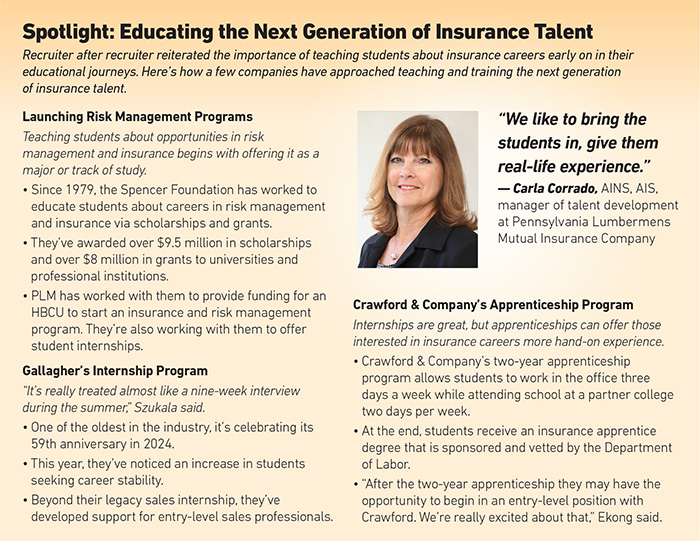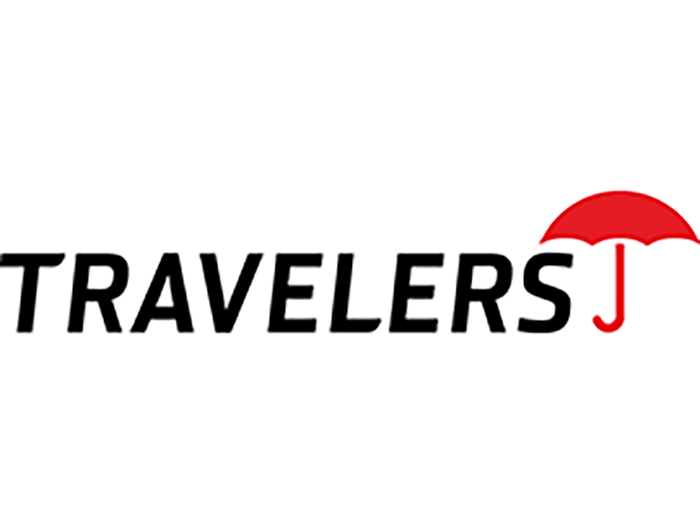5-Year Report Card: How the Insurance Industry Is Doing at Attracting New Talent

It’s hard to believe it’s only been five years since 2019, when the Jacobson Group released its report on the talent gap in insurance. The report included the oft-cited statistic that the insurance industry will need to fill 400,000 open positions by 2020.
Things have changed dramatically since then. A global pandemic caused many companies to freeze their hiring and institute layoffs. Then, as vaccines helped abate COVID-19’s spread and companies started hiring again, workers found they had a lot of flexibility in what jobs to take. In a move dubbed the Great Resignation, many workers left their jobs, sometimes in search of better benefits, and other times to pursue passions or new careers.
Through it all, the insurance industry has been ramping up its recruitment and retention efforts. From rebranding and introducing new technologies that appeal to younger talent to creating internship and apprentice programs that strengthen the talent pipeline, the industry has made strides in recent years to bring people into the world of insurance.
“We are constantly recruiting, we’re building awareness for the industry, and we’re tapping into different talent pools,” said Erin Zimmet, director of team resources, corporate teammate services and operations at Brown & Brown Insurance. “We didn’t let up on the gas, nor are we going [to] when it comes to our talent acquisition strategies.”
So, five years in, let’s look at what strategies have (and have not) been effective at bolstering the talent pipeline and, perhaps more crucially, keeping people in the industry long after those first entry-level positions.
Do: Consider People with a Wide Range of Experiences
One of the most successful strategies insurance companies have found is broadening their talent pool. Rather than drawing from a narrow list of finance, business and economic backgrounds, hiring teams have expanded their searches to include people with a wide range of experiences, including those who might be making career pivots.
“You need to try different avenues all the time because you just never know who you’re going to find,” said Carla Corrado, AINS, AIS, manager of talent development at Pennsylvania Lumbermens Mutual Insurance Company (PLM).
The benefits of considering people with varied career trajectories is clear for industries like commercial insurance, where specialized knowledge of a particular industry is an asset. Someone who studied art history might fare well as a fine arts insurance broker. A pilot may bring unique skills to brokering or underwriting aviation insurance products. “One of the first hires that we had when I joined the organization was a pilot. And then the next one was an attorney,” Zimmet said.
This approach widens the talent pool — but it can also open insurance up to competing with more industries for talent.
“I would imagine that when someone thinks about insurance, and when someone thinks about even HR, an attorney or someone with that legal professional background might not be the first person at the top of the list. But it really does marry very nicely,” said Jennifer Nicholson, vice president and manager of talent acquisition, Liberty Mutual.
Don’t: Underestimate the Competition
Thankfully, the fierce competition for talent has lessened since the early days of the Great Resignation, and insurance has emerged relatively unscathed: “I’m not convinced the Great Resignation affected the insurance industry as much as it impacted other industries,” said Dawn Brost, SVP E&S brokerage excess casualty, Nationwide.
Still, it’s important for recruiters to know who they’re competing with. Sectors like investment banking could be fighting with insurers and brokers for talent. “I see a lot of investment firms hiring underwriters because they bring them in to evaluate companies that they might be acquiring or making an investment in,” Corrado said.
Tech remains a major threat, partly because it has such a draw for the younger workforce.
“The technology sector is sexy. It’s exciting. It is a backbone for a lot of industries, including insurance and other financial sectors,” Brost said. “It’s a powerhouse area for attracting talent.”
In some ways, the insurance industry might be its own worst competition. “We are very good in the industry at stealing talent away from one another,” Brost said. Focus on helping people grow their careers.
Do: Take Referrals
Shifting recruitment strategies is important for managing new types of job applicants.
Today, “students are applying to exponentially more positions on a weekly basis than they ever have in the past,” according to Julia Szukala, early talent programs leader at Gallagher, in part because technology has made it simple to submit applications. HR teams need to shift their strategies to manage the glut of LinkedIn easy-submit apps.
One way to do that: Ask your current employees who you should hire. Employees know all about the skills and attitude needed to fit in at a given company. And they might know people who could be a good match.
“Teammate referrals are one of our large sources of new teammates coming into the organization,” Zimmet said. “Referrals actually have a longer retention.”

Referrals have long helped people find the insurance industry. A lot of brokers, carriers and underwriters learn what a great career insurance can be through family and friends who have succeeded in the industry.
“We do bring our families along the way into the business at some point; it’s not uncommon at all, whether it’s the broker side, retail agents, or carriers, and I think that’s something very special about the insurance industry,” Brost said.
Don’t: Rely on Traditional Recruitment Methods
At the beginning of the talent crisis, many people rightfully pointed out that the insurance industry needed a rebrand if it wanted to bring in younger workers. People typically don’t dream of careers in insurance; they need to see that “we’re exciting. We’re creative. We’re actually a lot of fun,” Brost said.
“I think we’ve got to continue to push against that financial sector stigma of being buttoned-up and bureaucratic — something to fear and be intimidated by.”
That starts by bringing in students. Many don’t know about the variety of opportunities — from brokering to underwriting and adjusting — that exist in insurance.
Nor do they know about the industry’s mission: helping people recover from a loss.
“We’re always looking at different ways to engage students, and one of the biggest things that we’ve put some emphasis on is educating students on what the insurance brokerage industry has to offer, what types of career paths there are and things of that nature, to make sure that students see it as an attractive career path,” said Gallagher’s Szukala.
To that end, traditional recruitment methods won’t cut it. Recruiters can’t just set up a station at a campus career fair to bring in new workers. That goes for older talent, too. Companies need to invest in targeted digital recruitment efforts.
“We’ve tried, especially over the years before COVID, to use what used to be very traditional methods. It was newspaper ads and in-person job fairs,” said Afiong Ekong, HR director at Crawford & Company.
“We’ve learned how to leverage technology to attract new talent,” Ekong added. “The language we would use on Facebook is not the same as [the] language we would use on LinkedIn.”
Do: Support Career Growth
With concerns over an impending recession, applicants are looking for industries that are going to be able to support them in the long term. What is a better field than insurance, where students can often see how their careers will progress?
“We do a lot of research to understand what students are thinking about in their recruitment process, and we saw last year one of the big topics was job stability,” Szukala said. “Students can really look at and visualize what their career path could look like within an organization like ours.”
More than salaries or health benefits (young workers often remain on their parents’ insurance until they’re 26), investments in education appeal to young workers and can show them that the industry is interested in supporting career growth.
“One strategy which may result in a less effective approach is relying solely on high salaries without addressing important factors such as company culture, work-life balance and career development opportunities. While competitive compensation is important, it does not guarantee long-term engagement or job satisfaction,” said Rose McPhee, senior human resources generalist with Society Insurance.
Last year, Liberty Mutual spent $7.3 million in tuition reimbursement for more than 1,000 employees, and another $480,000 for more than 200 employees to receive insurance designations. A move like that clearly signals that a company is interested in supporting its workers through the duration of a career.
“We recognize that they’re looking for meaningful career opportunities,” Nicholson said. “We really want to make sure that the talent is aware of career advancement that we have here at Liberty Mutual.”
Talent looking to join the industry may also be comforted by its stability.
As Zimmet put it, “We’re a forever company in an industry that can navigate economic downturns.” &










